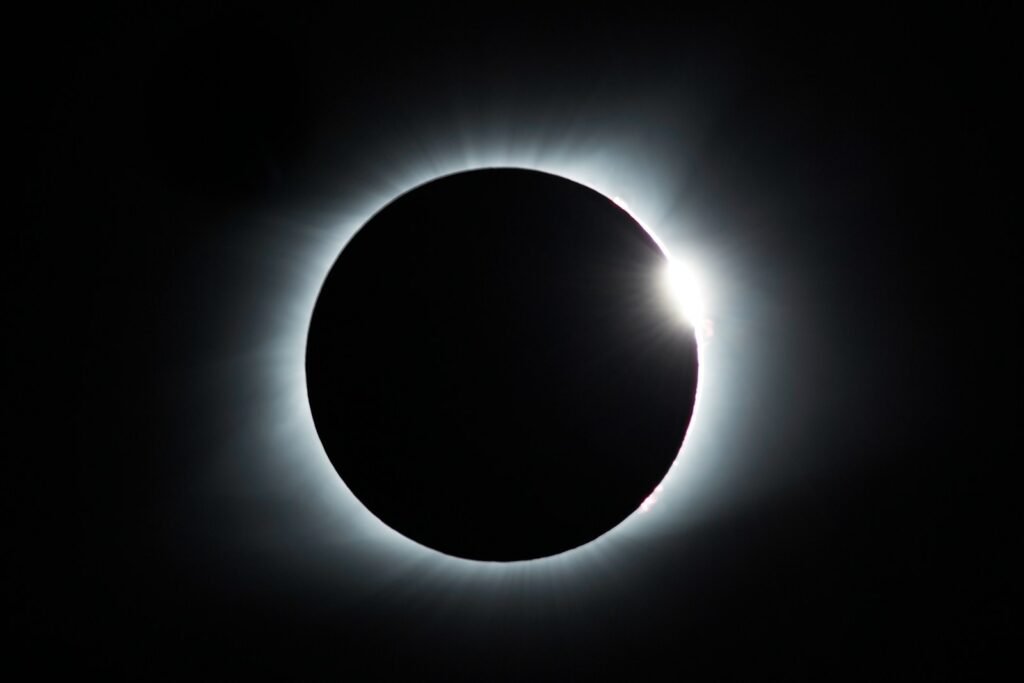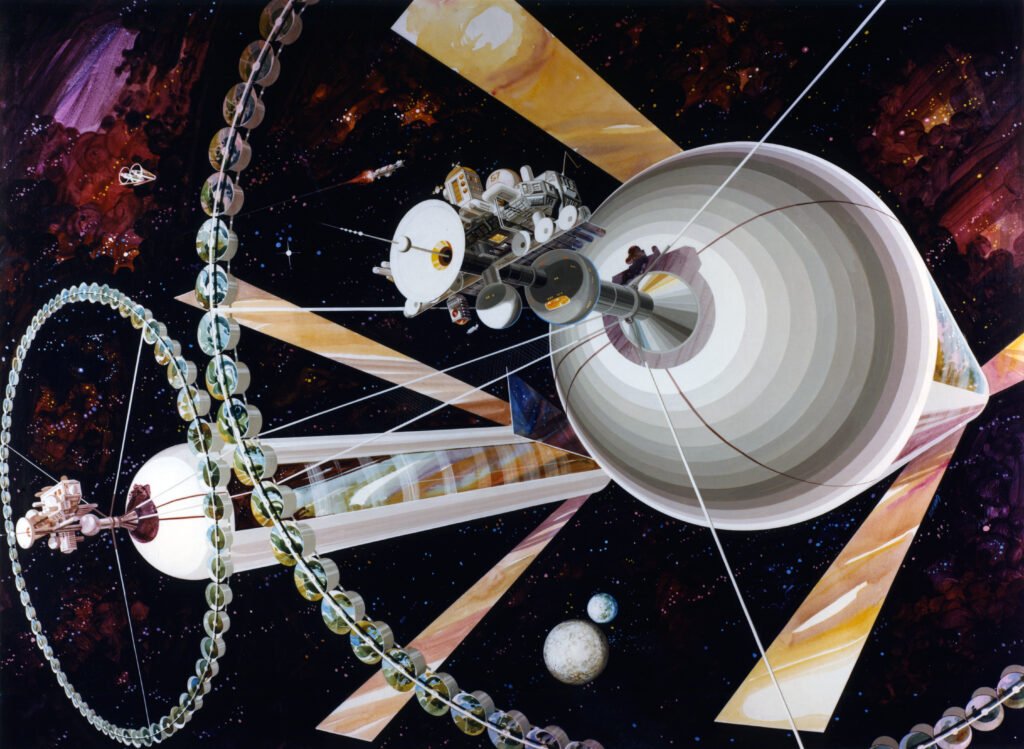You can’t feel it when you step outside at night, but the Moon is quietly drifting away from Earth, retreating by a thumb’s width every year. That tiny shift hides a sweeping story about tides, time, and the fragile geometry that makes total solar eclipses possible. Scientists have pinned down this recession with millimeter precision, turning a poetic notion into hard measurement and a new lens on Earth’s deep past. The mystery is simple to say and profound to unpack: why is the Moon leaving, what will it change, and how do we know for sure? The answers tie kitchen‑table curiosities to the physics of oceans and the choreography of celestial mechanics.
The Hidden Clues

The first clue lies in the tides that rise and fall along every coast, dutiful yet slightly out of step with the Moon’s overhead path. Earth’s rotation drags tidal bulges a bit ahead of the Moon, creating a gravitational tug that acts like a brake on our spinning planet. That tiny brake transfers rotational energy to the Moon, nudging it outward into a wider orbit. Picture a skater passing momentum to a partner with a gentle pull; the partner spirals outward while the skater slows ever so slightly.
This exchange is slow but relentless, and its fingerprints are everywhere once you know where to look. Ocean basins flex, sediments record rhythmic layers, and even the length of our day creeps longer by about 1.7 to 2.3 milliseconds per century. Put together, these subtle cues compose a single message: Earth and Moon are locked in a torque‑trading relationship that can’t help but push them apart. The wonder isn’t that the Moon is receding – it’s that we can measure it with astonishing accuracy.
From Ancient Tools to Modern Science

Long before lasers, ancient skywatchers tracked eclipses with disciplined attention, leaving records that now double as historical datasets. Their observations hinted that Earth’s rotation wasn’t perfectly steady, but they couldn’t explain why. Fast forward to the space age, and astronauts placed mirror‑like retroreflectors on the lunar surface during crewed missions, with additional reflectors delivered by robotic landers. These targets let researchers ping the Moon with laser pulses and time their return to a few trillionths of a second.
Those measurements translate to distance changes on the scale of millimeters, which, averaged over years, reveal a recession of about 3.8 centimeters annually. What used to be an inference from tides and sediments is now a routine, global experiment repeated night after clear night. The arc from clay tablet to laser station tells a satisfying story: when tools sharpen, mysteries yield, and simple questions – how far, how fast – gain precise, reproducible answers. In science, patience and better instruments often turn whispers into numbers.
What’s Actually Pushing the Moon Away

The engine behind the drift is tidal friction, the energy lost as tides slosh and rub against continental shelves and seafloors. Because friction delays the peak of the tide, the tidal bulge tilts a little ahead of the Earth‑Moon line, creating a torque that steals a sliver of Earth’s spin. Conservation of angular momentum demands payback, and the Moon collects it as orbital energy. The result is a slightly higher, slower orbit – outward drift paired with a longer lunar month.
This process isn’t fixed in stone; the ocean’s shape, depth, and the arrangement of continents modulate how efficiently energy is dissipated. In other words, different geologic eras likely had different recession rates. Today’s rate is a snapshot in a long film, shaped by plate tectonics, sea levels, and even the viscosity of the mantle that subtly deforms with the tides. The headline number is stable enough to trust, but the backstory is alive with Earth’s restless geology.
Eclipses on Borrowed Time

Total solar eclipses exist because the Moon currently appears just big enough to cover the Sun from our vantage point. As the Moon recedes, its apparent size shrinks, while the Sun’s stays roughly the same, setting a long countdown on the era of totality. Far in the future – in approximately 600 million years – total eclipses will fade into annular ones, with a glowing ring of sunlight encircling the Moon. The spectacle that stops traffic and humbles crowds is temporary, a cosmic coincidence with an expiration date.
That knowledge gives each eclipse an extra charge of meaning. We’re living in the sweet spot when geometry and timing align, and that should deepen our appreciation rather than spark despair. It’s a reminder that our sky is dynamic, not static; the stage lights are shifting, even if the cues run on geological time. The next time the day goes dark at noon, remember: this is a privilege of our epoch.
Tiny Drift, Big Consequences

A few centimeters per year sounds trivial, but the integrated effects steer fundamentals we take for granted. As Earth slows, the day lengthens ever so slightly, and over deep time those increments accumulate into hours. Geological archives – like the growth bands in ancient corals – suggest there were once far more, shorter days in a year, a natural clock baked into biology and tides alike. The Moon’s outward slide also subtly reshapes tidal ranges, influencing coastal erosion, sediment transport, and the ecosystems that depend on regular flooding.
There are practical ripples for today’s precision‑obsessed world. Navigation systems, space missions, and even financial networks count on exquisitely accurate timing linked to Earth’s rotation and celestial mechanics. Calibrating those systems means acknowledging the planet’s imperfect spin and the Moon’s slow retreat. The better we model this dance, the more confidently we can predict tides, schedule space rendezvous, and understand the Earth system as a whole.
Why It Matters

Understanding the Moon’s recession isn’t just trivia; it’s a stress test of how well we grasp energy transfer in the Earth system. Traditional calendars treated the day and month as absolute, but the Moon’s drift exposes them as evolving quantities that need continuous revision. Comparing the modern laser record to ancient eclipse logs and geological rhythms lets scientists cross‑check models across wildly different timescales. When those lines of evidence converge, confidence rises that we’re not fooling ourselves.
The stakes reach beyond celestial mechanics. Better tidal models improve coastal planning, storm‑surge forecasts, and habitat conservation – areas where small margins can save lives and livelihoods. In my own notebook from a field visit to a marsh, I scribbled how a few centimeters of water meant the difference between a nursery for fish and a mudflat. The Moon’s quiet pull is part of that story, which makes this research feel less like abstraction and more like stewardship.
Global Perspectives

Laser ranging is a planet‑wide enterprise: observatories in multiple countries share data, compare timing, and refine models together. That collaboration blends geophysics, astronomy, and engineering, bridging specialties that often speak different dialects of science. Nations with long coastlines watch the tidal aspect closely, while spacefaring agencies focus on lunar navigation and future landings. Universities contribute everything from improved retroreflector designs to algorithms that tease signal from atmospheric noise.
There’s also a cultural thread that makes this story resonate beyond labs. Communities plan festivals around eclipses, educators build lesson plans from tide charts, and photographers chase the Moon across deserts and icefields. The research becomes a backdrop for shared experiences, and shared experiences become an entry point for new curiosity. When a finding can inform policy and inspire wonder in the same breath, you know it matters.
The Future Landscape

Next‑generation retroreflectors and more powerful lasers promise sharper measurements, extending the timeseries and shrinking uncertainties. Networks of radio telescopes and atomic clocks will knit together Earth‑Moon dynamics with unprecedented coherence, turning orbital mechanics into a real‑time dashboard. Space agencies are sketching systems to navigate around the Moon with the same confidence we expect from terrestrial GPS, and that requires pin‑accurate gravity and distance maps. Each improvement loops back into climate‑scale models of tides and into mission‑critical guidance for landers and orbiters.
Challenges remain: atmospheric turbulence limits laser precision, seismic jitters on the Moon can nudge reflectors, and funding must keep pace with ambition. Yet the payoff is broad and durable – better predictions of tides, safer spaceflight, and a cleaner read on how Earth dissipates energy. Think of it as upgrading the orchestra’s metronome so the whole symphony tightens. When the tempo is right, every other instrument – oceans, satellites, even calendars – plays better.
How You Can Engage

Start small and local: learn your coastline’s tide schedule, visit during low and high water, and notice how the landscape changes with the Moon’s phase. Attend a public eclipse or Moon‑watching event, and bring someone who’s never looked through a telescope – shared awe is a reliable spark for curiosity. If you can, support observatories and science centers that maintain the instruments behind these measurements; their work keeps the data honest and the models improving.
Teachers and parents can fold the Moon’s drift into simple projects – measure shadows over an evening, track lunar phases for a month, or chart the timing of the tides on a familiar beach. And if you’re already space‑curious, follow missions that place new reflectors or test lunar navigation; their progress turns abstract dynamics into tangible achievements. The Moon is slowly leaving us, yes, but it’s also inviting us to pay closer attention to the forces that bind our world together. What will you notice first?

Suhail Ahmed is a passionate digital professional and nature enthusiast with over 8 years of experience in content strategy, SEO, web development, and digital operations. Alongside his freelance journey, Suhail actively contributes to nature and wildlife platforms like Discover Wildlife, where he channels his curiosity for the planet into engaging, educational storytelling.
With a strong background in managing digital ecosystems — from ecommerce stores and WordPress websites to social media and automation — Suhail merges technical precision with creative insight. His content reflects a rare balance: SEO-friendly yet deeply human, data-informed yet emotionally resonant.
Driven by a love for discovery and storytelling, Suhail believes in using digital platforms to amplify causes that matter — especially those protecting Earth’s biodiversity and inspiring sustainable living. Whether he’s managing online projects or crafting wildlife content, his goal remains the same: to inform, inspire, and leave a positive digital footprint.




